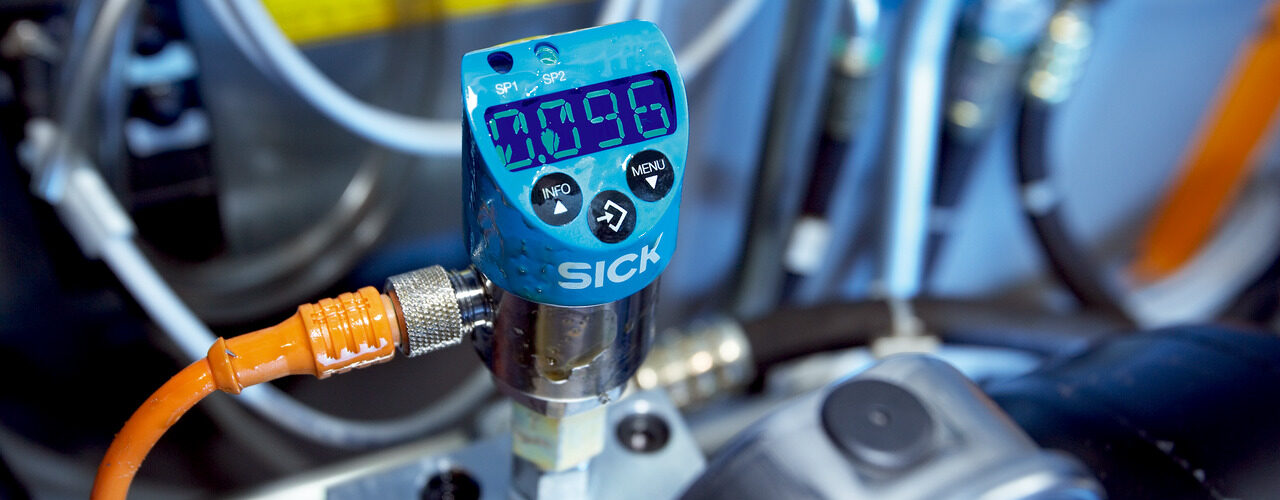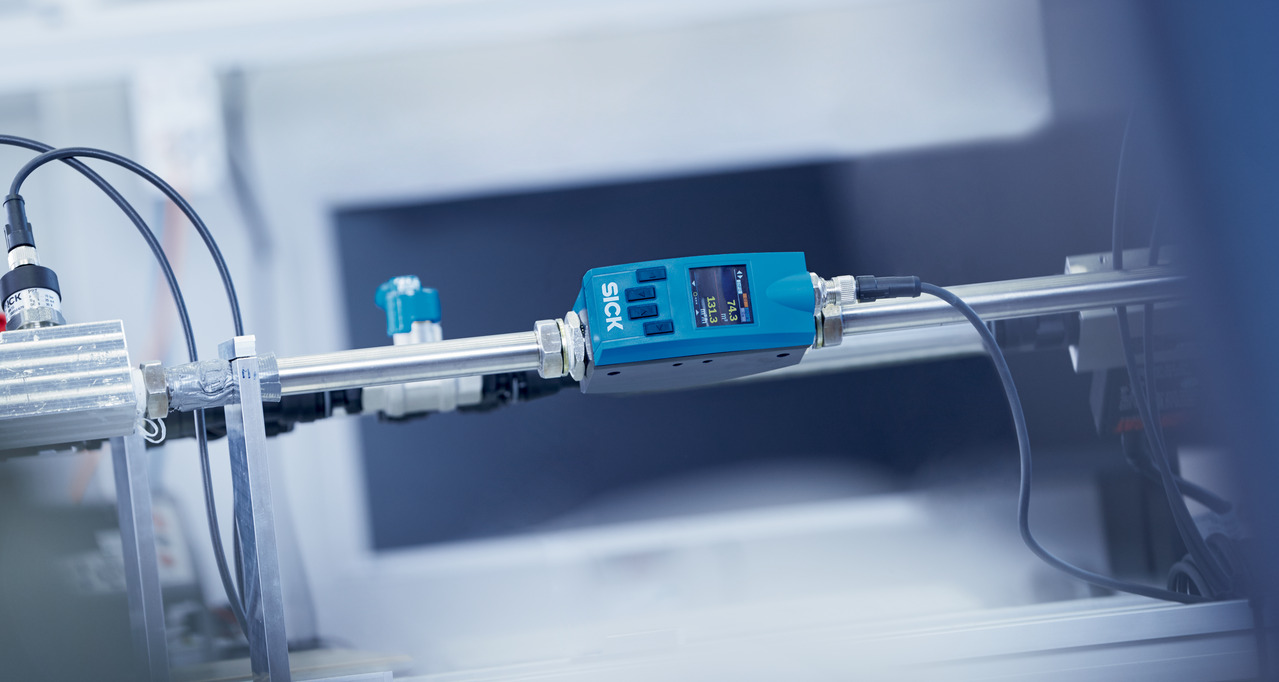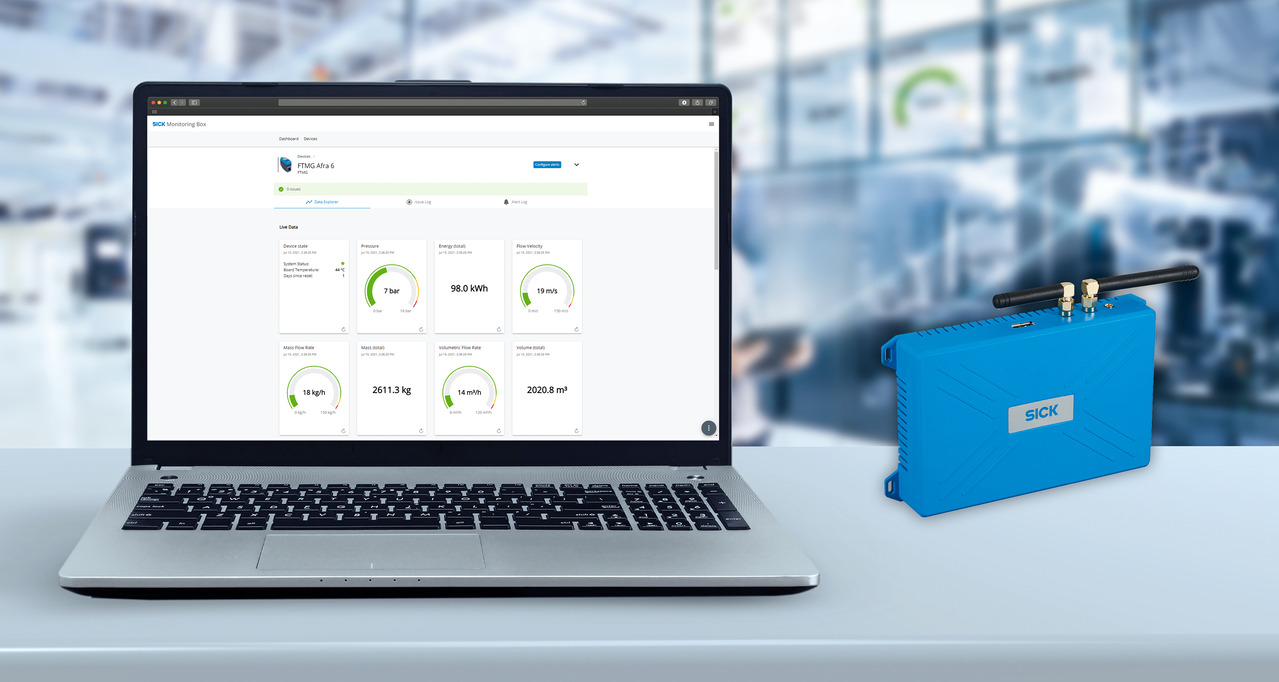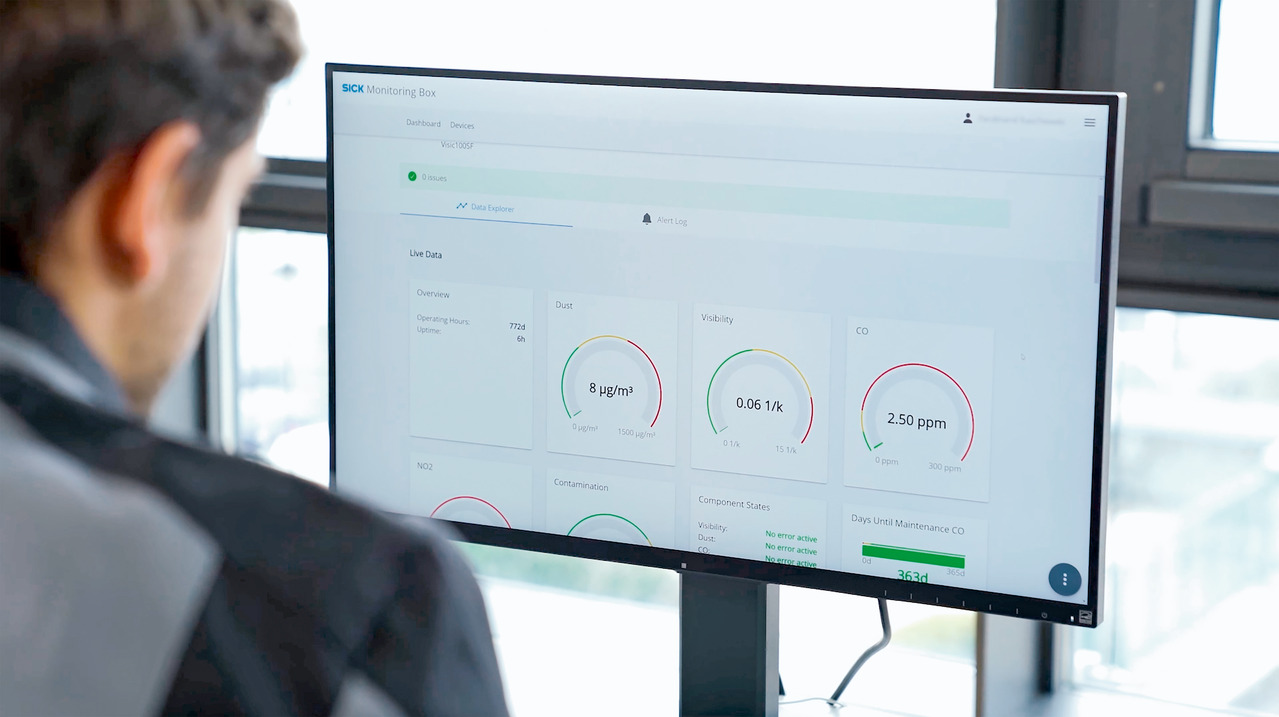What is compressed air and why should you monitor it closely to save money on energy costs
Compressed air is a vital source of energy for many industrial and manufacturing processes, and monitoring its usage is becoming increasingly important for businesses looking to reduce energy consumption and costs. For decades, SICK has implemented sustainable and energy-saving measures in production, logistics, and other energy-relevant areas at all its sites.
What is Compressed Air?
Compressed air is a form of energy used in many industrial and manufacturing processes. It is created by compressing air to a higher pressure than atmospheric pressure, which allows it to be stored and transported. Compressed air can be used for a range of applications, from powering tools and equipment to running automated processes.
In manufacturing, compressed air is often used to power pneumatic tools and enhance the performance of automated processes. It is also a key component in many industrial processes, such as spray painting and sandblasting.
Why Monitor Compressed Air?
Compressed air monitoring is important for any business that uses compressed air as part of its operations. This includes manufacturers, industrial plants, and other facilities that use compressed air to power tools and equipment or to enhance the performance of automated processes.
If you’re a production engineer, you likely want to monitor compressed air consumption of components and systems. Monitoring this closely allows for the prevention of machine failures and potential downtime with dynamic leak tests during operation. For example, a production engineer will want to identify peak loads to adjust the compressor control. Because of this, a concise and clear dashboard that includes all flow sensors and their status is of great value.
If you’re a maintenance manager, you likely want to identify the main consumers of compressed air and receive notifications quickly when certain limit values are exceeded. This aids in finding possible leaks quickly and being able to better plan for timely maintenance work on the energy supply.
Energy and environmental officers are likely interested in ensuring the company meets certification of the company in accordance with regional and national standards. On the other side, those in finance want to have a cost overview of systems, processes, and products that is as detailed as possible to be able to calculate manufacturing costs more accurately and stay competitive. And owners, managing directors, or Executive Board members want to be informed about potential savings.
How SICK Uses Compressed Air
One of the most recent examples of compressed air monitoring at a SICK facility involves the Flow Thermal Meter for gases (FTMg), which SICK used as a foundation to design a graduated solution concept. SICK’s new FTMg sensor and monitoring solution offers a reliable and cost–effective way to keep tabs on compressed air usage and make sure it’s being used efficiently.
For example, at the Freiburg-Hochdorf site in Germany, the FTMg monitors the compressed air supply of an automatic assembly plant using a TDC-E device as a gateway. It ensures continuous operation of the system and creates transparency in compressed air consumption and costs.
At the Reute plant, FTMg units are used for data acquisition on a CNC machine as well as in a production line for printed circuit boards. Thanks to its multifunctional nature, the sensor is not only suitable for compressed air monitoring — in addition to the current flow rate in the volume and mass flow, but it can also measure and provide live values for energy in kWh as well as pressure and temperature.
At the company’s global headquarters in Waldkirch, Germany, the FTMg, integrated into the plant-wide energy monitoring system by means of the TDC-E IoT gateway, is proving its worth in continuous operation in climate cabinets for safety laser scanners. Similar sensors were also added at SICK’s new US production site to monitor what product is generated on the supply side of the system. This will be expanded on the demand side of the system soon.
Why Use the FTMg?
The FTMg compressed air monitoring system is designed to provide users with a comprehensive overview of compressed air usage, helping to identify potential savings and make sure compressed air is used as efficiently as possible. The system is easy to install and use, with an intuitive interface that makes it simple to get up and running quickly. It also offers a range of advanced features that make it an invaluable tool for businesses looking to monitor their compressed air usage.
Designed to measure the pressure, temperature, and flow rate of compressed air, the FTMg sensor provides users a real-time view of energy consumption. This data can then be used to identify any wasteful practices or inefficiencies in the system, allowing users to adjust and optimize compressed air usage. The sensor also measures the pressure drop across the system, which can help identify leaks or other issues that are wasting energy.
It also includes cloud-based analytics, giving users access to powerful data analysis tools that can provide insight into their compressed air usage. The system can track usage over time and generate reports that can be used to identify potential savings. It also allows users to set alarms and receive notifications if their compressed air usage exceeds certain thresholds, making it easier to spot problems before they become costly.
The FTMg flow sensor for real-time energy measurement is one of several sensor solutions for pneumatic systems in the SICK product range. This sensor provides a scalable solution for compressed air monitoring with three possible expansion stages.
- The stand-alone FTMg including web server
- One or more FTMg devices with an IIoT gateway, such as the TDC-E for data processing and integration into customer-specific MES, cloud, or energy management systems
- The Monitoring Box as a complete solution for FTMg flow sensors including monitoring app, dashboard with alarm function, integration, and corresponding software and cloud services
Real-Time Data and Analytics
The FTMg compressed air monitoring system is an ideal solution for businesses looking to maximize their energy efficiency. By providing real-time data and powerful analytics, it can help users identify potential savings and make sure their compressed air system is running as efficiently as possible. The system is easy to install and use, making it a great choice for businesses looking for an affordable and reliable way to monitor their compressed air usage.
SICK is a leading provider of industrial automation solutions and its FTMg sensor and monitoring solution offers a reliable and cost-effective way for manufacturers to monitor compressed air usage. Additionally, SICK offers a range of support services to help ensure the system is running smoothly, making them an ideal partner for manufacturers looking to maximize their energy efficiency.
Want to learn more about compressed air monitoring systems? Contact a SICK representative today!










